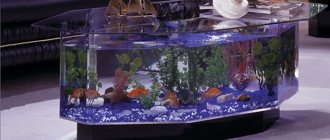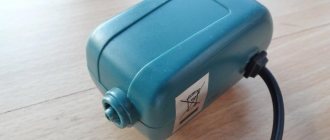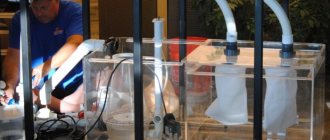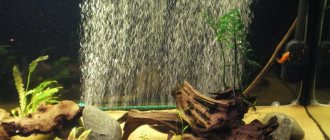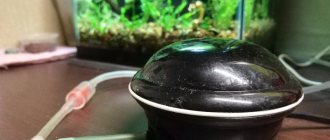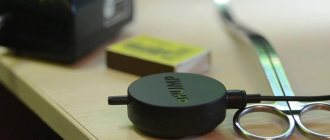For aquarium
Compressors
The best compressors for aquariums rating 2022 in 2021 buy. TOP 10
For aquarium
Compressors
review of the best reviews. The best compressors for aquariums rating 2022 in Russia list 2021 - 2021.
For aquarium
Compressors
Fish are silent creatures. They will never say that they feel bad, so a person’s task is to constantly monitor their habitat. Sudden changes in temperature and violation of the permissible minimum and maximum limits, incorrectly selected soil, and low-quality cheap food can cause the death of aquatic inhabitants. To prevent this from happening, you need to purchase the necessary devices to control the comfort level of the fish. The list also includes compressors.
Why do you need a compressor?
The modern, densely populated herbalist is a high-tech facility, often intimidating to newcomers at the cost of proper equipment.
For successful growth and development of plants inside the aquarium, you need to establish a nitrogen cycle. This is the basis of biofiltration and thanks to it, biobalance is established in the aquarium. First, it’s worth understanding specifically what the nitrogen cycle is. Dying parts of plants, waste from fish, nutrients from the substrate - all this is an excellent environment for the growth of bacteria. At the initial stage, from all this “beauty” we get ammonium. By the way, algae simply adore him. And for fish and higher plants, ammonium is a real poison. Moreover, the destructive effect is not noticeable immediately, but as it accumulates in the tissues.
When there is enough oxygen, Nitrosomonas bacteria enter into battle with ammonium. They oxidize this compound to nitrite NO2. Then comes Nitrobacter's turn. These bacteria also, in the presence of oxygen, oxidize nitrites to nitrates NO3, although this process requires less oxygen than the previous one.
To understand the mechanism of operation of this system, it is enough to carefully consider the life of natural reservoirs. In places where water is stagnant and polluted, you will never see higher plants. Algae reign there, actively feeding on ammonium and forming colonies of bacteria. They go downstream, where higher beings live.
Only artificial aeration using a compressor can provide such conditions in a closed aquarium system. The main task of this special aquarium device is to saturate the water with oxygen. When stationary, the liquid gradually stagnates and turns the indoor pond into a kind of swamp. The device emits jets of air into the water, which ensures its continuous circulation.
Many herbal aquascapers claim that a powerful filter is enough to process harmful substances. And oxygen is produced by the plants themselves, so additional injection is not required in a densely planted herbal garden. That's right. During the daytime, active photosynthesis processes ensure the release of oxygen by plants.
At night the reverse processes begin. Plants begin to absorb oxygen, and at this time its shortage is especially acute. The operation of the compressor will precisely ensure the same nitrogen balance in the aquarium.
In addition to practical, the aquarium compressor performs a decorative function. The bubbles it forms rise beautifully from the water column and settle on parts of the plants. This picture creates the feeling of entering a real underwater kingdom. The movement of bubbles relaxes and calms. Is it worth denying yourself such a pleasure?
JBL
JBL has a whole “silent” line called JBL ProSilent. Despite their virtually silent operation, their compressors fully provide aeration for aquariums of various sizes (from 40 to 600 liters).
The noise level demonstrated during measurements was 20 dB (if you choose the smallest model) and 30 dB (for the largest ones). The manufacturer also warns that the sound level may increase over time due to dust on the air duct gasket and limescale contamination of the sprayer. However, these spare parts can always be replaced.
Is it possible to do without a compressor?
The herbal aquarium can be maintained without the use of a compressor.
But it is not a fact that this is a reasonable solution. Of course, if you are ready for frequent water changes, every 3-4 days, you know how to select the ideal soil and know what to do when your flora and fauna suddenly starts to get sick. If not, be prepared for unpleasant consequences:
- In large-volume aquariums, a “dead zone” will form closer to the bottom, which can lead to the death of aquatic organisms.
- As they settle to the bottom, the remaining food and fish waste will begin to slowly decompose. This in turn will cause excessive growth of algae, which will interfere with the development of higher plants.
- In dirty water, pathogenic bacteria and parasites will begin to multiply. They will settle on the walls and in the ground. Soon the biobalance in the aquarium will be disrupted.
This scenario is not uncommon in the everyday life of beginning aquarists.
There are some advantages to not using a compressor:
- no noise;
- independence from electricity;
- saving money on purchasing a device.
After all, just recently aquarium lovers did without such equipment. But such conditions were suitable for unpretentious fish (vallisneria and hornwort) and some species of unpretentious fish (guppies, labyrinths, macropods, goldfish, cockerels).
A serious herbalist with capricious fish is unlikely to like such “military field” conditions. No, they will not die overnight, but they will not feel the best. Therefore, even the cheapest and simplest compressor is clearly better than no compressor at all.
A compressor is definitely necessary if you keep a flat picture aquarium or a large (more than 300 liters) and deep (above 50 cm) indoor pond. Because the smaller the surface area and depth, the worse the conditions for independent gas exchange.
Main settings
The question often arises, which compressor is better to buy. Some of the following characteristics can be found in the device passport, the rest during operation:
- Performance. In such a situation, not only the speed at which the car’s tires are inflated plays a key role. When fully inflating a deflated device, you may encounter the fact that an insufficiently efficient device is not able to compensate for air leakage.
- Type of connection. In a productive device, engine power plays a key role. In this regard, energy consumption increases, so you should be skeptical about products that are plugged into the cigarette lighter socket or the indicated power on the packaging does not correspond to reality (it is often necessary to constantly change blown fuses). Connecting the car device with “crocodiles” directly to the battery is the best solution, but only when the car has open access to the terminals.
- Cable length. Often the disadvantage of the products in question is the fact that the cord will not be long enough to reach the rear of the car. In addition to the length of the cable, you should evaluate its rigidity - with strong stretching, a hard wire pulls the plug out of place. In this regard, it is advisable to look for products with a regular type of cord.
- Characteristics of the pressure gauge. It is difficult to assess the accuracy of readings without a high-quality pressure gauge; therefore, one should, first of all, focus on the pressure gauge scale. On small devices, the arrow easily overlaps the divisions. You should not strive to purchase devices with double digitization: the need to set the pressure in pounds per 1 square meter. an inch is missing, and therefore the additional ruler is in the way.
- Duration of continuous operation. This indicator is assessed in conjunction with power. For example, when an SUV or crossover has high-profile tires, the poor performance of the device will pump the wheels for a long time and create overheating.
Types of compressors
According to the main classification, compressors are divided into piston and membrane. The differences lie in the cost of the devices and the level of noise they emit.
Piston
The operating principle of this device is based on the movement of the piston.
It pushes out air and directs it into the depths of the water. The device has a higher price than a membrane one, but produces less noise. Piston compressors are ideal for bedrooms and recreation rooms. Their advantages are durability and high performance. These types of compressors are recommended for installation in large-volume aquariums.
The main disadvantages of piston compressors:
- high price;
- high power consumption.
Recently, piezo compressors have competed with piston aerators in terms of noise emission. But they have a significant drawback - they are low-power and are not suitable for installation in aquariums with a volume of 200 liters or more.
Membrane
The movement of air in such devices occurs from a chamber connected to the membrane, in which pressure differences are observed. They occur due to vibrations of the magnet, which are also transmitted to the rubber membrane. The advantage of this type of compressor is its low energy consumption.
Flaws:
- low power;
- noisiness.
Depending on the installation method, internal and external compressors are distinguished. External ones can be installed under containers, therefore they are more aesthetically pleasing, because they do not disturb the composition of the aquatic space. The internal ones are a pump. Its rotating element is installed directly in the container. This allows you to reduce the noise level during operation.
Duration of work
The number of hours that the tank aerator will operate depends on the population and the size of the glass fish house. If there are a small number of pets in the aquarium, then you should not leave the device working around the clock; in addition, there are species of fish that do not require constant aeration.
You can determine the exact operating time of the device by learning about the preferences of a particular type of fish and by observing the behavior of your pets: if the fish rise to the surface of the water surface, then the pets do not have enough air. It is important to note that a lack of oxygen can have a detrimental effect on the health of the fish, and even take the life of their wards.
Device selection criteria
Selecting a compressor and calculating the required power of the device is not so simple. You walk into a store and your eyes widen at the abundance of available options. Don’t rush to buy the first device you come across, focusing only on the reasonable price. First, “do your research.” It is necessary to take into account many seemingly insignificant little things. And this is by no means an aesthetic appeal.
Important criteria for selecting a compressor:
. This parameter directly depends on the volume of the aquarium, because oxygen will be distributed throughout the entire perimeter, and an excess can cause harm rather than benefit. Optimal indicators are 0.8 per liter of water, adjusted for population level. For densely planted herbal plants, productivity can be increased by 10%.
Performance- Power . This criterion is directly related to productivity. It is important to take it into account solely for the purpose of saving energy.
- Size . For large aquariums, universal devices with high power and performance are suitable. Small compressors are enough for small ones. Recently, miniature models have appeared on the market, which are worth paying attention to when maintaining small herbal aquariums.
- Manufacturer . The leaders in the production of equipment for aquariums are German brands. The most popular are Schego and Eheim - brands tested by many aquascapers. But there are also lesser-known companies that supply equally high-quality equipment. For example, Aquael, Tetra, Collar.
Different brands may have additional characteristics: the presence of a retainer, a filtration system, and the like. They do not have an important structural significance, but they add comfort to the use of the equipment and accordingly increase its cost.
As for the choice of sprayers, taps, and other “accessories,” use what you like. There is no big difference in the choice of accessories and there is no fundamental difference in their operation.
But each option has pros and cons:
- Flexible hoses with a fine spray produce a lot of beautiful bubbles - this is their advantage. But the holes get clogged quickly and are difficult to clean.
- Stones are more practical in terms of maintaining cleanliness.
How to install
For the health and safety of the little inhabitants of the tank, it is important not only to choose the right model, but also to know how to install a compressor in the aquarium. If the device is connected incorrectly, this can lead to many dire consequences.
How to install a compressor in an aquarium:
- First you need to choose a place where the aerator will be located. You can place the device inside the fish container, on the lid, or in the bedside table on which the container rests. If you install the aerator in a container or cabinet with sound insulation, the hum can be avoided.
- The aerator is installed, depending on the manufacturer’s recommendations, on the surface, partially or completely immersed in the aquarium liquid. If the latter option is used, a check valve is required.
- A heater is installed not far from the aerator. This will help mix cool water with warm water faster and equalize the temperature.
- Once you have completed the installation, it is important not to forget to take care of the compressor: clean it regularly and remove dirt. Otherwise, the aerator will not last long.
The best compressors for herbalists
The list of the best compressor models includes models that are popular and in high demand among aquarists due to the combination of reasonable price and high quality.
Schego Optimal Electronic
Reliable membrane device made in Germany. Operates on a voltage of 12 V. Capacity – 150 l/h, power – 4.8 W. Suitable for aerating containers of 50 – 150 l. It is possible to secure it below the water level when installing an additional check valve.
Advantages of the model:
- high quality membrane
- compactness;
- absence of strong noise and vibration;
- Possibility of operation from a battery and batteries;
- long cable.
Flaw:
- high price.
Collar aPump Mini
Innovative model of piezo compressor with reduced noise level (less than 35dB). Designed for aeration of aquariums up to 30 liters. The power of the device is 1.5 W.
Pros of the model:
- miniature dimensions – case diameter 33 mm;
- Possibility of installation below and above water level;
- low cost;
- compactness.
Minuses:
- power is not regulated;
- Can not be repaired.
Aquael Miniboost 100
Polish-made compressor for aquariums with a volume of up to 100 liters and a height of up to 60 cm. The power of the device is 1.8 W.
Advantages of the model:
- efficiency;
- durability;
- compactness;
- safety.
Minus:
- strong humming noise during operation.
Jebo Sonic 301
Compact membrane-type device for containers with volumes from 10 to 50 liters. Capacity – 60 l/h. The main advantage of the compressor is low energy consumption at average power. The device is additionally equipped with a carbon filter, which extends its service life.
Advantages of the model:
- wear-resistant membrane;
- high-quality assembly;
- Affordable price;
- power adjustment.
Flaws:
- external mount only;
- noisiness.
Eheim Air Pump 200
Powerful membrane compressor from a trusted German manufacturer. This model is the quietest of all high-power devices. Productivity – 200 l/h, power – 3.5 W. The compressor is capable of pushing water depths up to 2 m. It is possible to adjust the power. The compressor is equipped with vibration-absorbing curbs and rubber feet, which reduces noise during operation.
Pros of the model:
- noiselessness;
- Suitable for fresh and salt water;
- Possibility of disassembly for repair;
- setting individual bubble mode in each channel.
Minuses:
- The kit does not include a check valve;
- high price.
Hydor H2ShOw Bubble Maker
Submersible compressor made in Italy. On the rotor of the device there is a rotating body that creates a vortex of beautiful bubbles. Their size and intensity can be adjusted to your liking. Designed for installation at a depth of no more than 45 cm. Device power – 4 W, productivity – 200 l/h.
Advantages of the model:
- compact dimensions;
- high-quality hose fastening using suction cups;
- easy disassembly for cleaning and repair;
- noiselessness;
- reliability.
Disadvantages of the model:
- impossibility of use in deep aquariums.
Tetra APS 300
Diaphragm compressor for external installation. Capacity 300 l/h. Designed for installation in containers from 120 to 250 l. Device power – 4.5 W. Equipped with noise-reducing chambers and rubber feet that effectively reduce vibration.
Two air channels have power regulators. A durable diaphragm and Silaflex valve ensure long and stable operation of the compressor.
The advantages of this device:
- unusual appearance of the case;
- quality materials;
- absence of noise and vibration during operation;
- ease of maintenance;
- presence of a filter in the air pipes.
Minuses:
- Lack of hoses and nozzles included.
Heiy Prime PR-4113
A unique piezo compressor from a Chinese manufacturer. Compact dimensions are combined with fairly high power (3.5 W). The productivity of the device is 24 l/h. The compressor is designed for tanks with a height of up to 1 m and a volume of up to 200 liters. The device is absolutely silent.
Pros of the model:
- aesthetic appearance;
- quiet operation;
- reasonable price.
Flaws:
- does not push through hoses with sprayers from other manufacturers;
- The suction cup does not hold well.
Juwel Eccoflow 1000 with aerator diffuser
The most powerful compressor of all of them: its capacity is 1000 l/h. The aeration function is carried out by a special diffuser nozzle, which sucks air through a tube and mixes it with the pumped water.
Advantages of the model:
- noiselessness;
- efficiency combined with maximum productivity;
- affordable price.
Flaws:
- compatible only with “native” filters;
- not recommended for pumps with a capacity of less than 500 l/h.
DIY assembly
Considering that prices for high-quality aerators are high, aquarists with skilled hands often assemble an aquarium compressor with their own hands. It should be warned that without experience in such work and knowledge, there is no need to take risks by assembling a homemade device at home, since there is a high risk of the device shorting or breaking.
How to assemble a compressor for an aquarium:
- The construction will require a compact electric heater, which is connected to the network. The power of the device should be up to 12 Volts; it is preferable to choose silicone hoses.
- After connecting, an eccentric is attached to the motor, which will be needed to move the pump. In this case, the device will be able to supply air to the tank while simultaneously providing mixing of the liquid.
The advantage of a homemade aerator assembled according to the above instructions is the absence of noise. Installation is carried out from the outside, fixing it to the surface of the container or placing it nearby.
Common questions for beginner aquarists
Do I need to install a compressor if the internal filter already has an aeration attachment?
If you direct the air flow so that ripples are created on the water, the filter will be enough. But it is more advisable to use a compressor for two reasons. When treating fish, when it is necessary to increase aeration. Fine bubbles are often supplied through the bell, and this impairs the solubility of oxygen and increases the noise from the operation of the device.
Where is the best place to install a check valve?
It is optimal to place the valve on the hose, above the water level. So, when starting up, the aerator will need to push out water only in a small section: from the valve to the disperser tube. If you place it closer to the aerator, the water will fill the tube completely up to the section where it is installed.
Is it possible to place a compressor under an aquarium in a closed cabinet?
Yes, this arrangement will reduce the noise from the operation of the device. You can extend the device to any convenient place, the main thing is that everything is connected correctly. However, it is worth remembering that when the aerator is located below the bottom of the aquarium, a check valve should be installed on the hose. If there is a power outage, water will flow down through the hoses, which can damage equipment and lead to flooding of neighbors. Among the models, Tetra Tec with a nipple membrane has proven itself well. Among the cheap Chinese analogues there are also decent ones. When purchasing, rely on reviews.
I made a mistake in my calculations and purchased a compressor that was too powerful. Do you really need to change it?
If the device does not have a regulator, you can use a tap to shut it off. But it is better to change the model, since due to overlap, the compressor membrane wears out faster.
Is it possible to take a compressor with a power 2 times higher than that required for an aquarium?
Too much aeration with a powerful compressor will “sway” small fish and raise the turbidity from the bottom upward. Plants will not be able to develop in such conditions: strong aeration will blow out the CO2 they need. Therefore, purchase compressors of appropriate power.
A compressor is a device necessary to maintain biobalance in the herbalist. It ensures continuous enrichment of water with oxygen, which has a beneficial effect on the development of plants and the condition of the aquarium fauna. To obtain maximum benefit, the device must be selected based on power, taking into account the parameters of the aquarium.
Tetra
Another well-known German company produces compressors with slightly higher noise generation. When developing the design, engineers took into account all the disadvantages of their previous models, as a result of which the new devices are equipped with special noise-insulating housings made of dense material, and the membranes are made of highly elastic rubber.
The most compact aerator from the silent line is suitable for use in small aquariums (10-60 l). At the same time, it produces a noise of approximately 26 dB. If you are choosing a compressor for a large tank (up to 600 l), then choose the Tetra APS-400 model. Its noise level is 37 dB, which can be compared to the slight rustle of paper in a spacious classroom.
Tetra, according to reviews from professional aquarists, always overheated during operation. This point was also taken into account. The new models do not have this disadvantage. You can also note the stylish modern design, which plays a significant role in the popularity of the company.
Pump manufacturers
Using a pump, you can maintain the necessary microflora in the aquarium. When choosing equipment, you should give preference to leading manufacturers specializing in aquarium equipment:
Eheim. German manufacturer of devices for aquariums. It is a world leader in instruments renowned for their durability and reliability. The manufacturer provides the buyer with a 3-year warranty. Resum. The pumps from this company meet all the necessary requirements. They are highly efficient and virtually silent. The advantage of the devices is economical energy consumption.
The manufacturer Eneim provides the buyer with a 3-year warranty.
Hailea. The company produces devices with low water supply pressure. For easy control of liquid flow, the devices are equipped with a switching regulator. Using rubber suction cups, the device is easily attached to the aquarium. Aquael. Devices from the Polish manufacturer are easy to maintain. Their high efficiency is ideal for water aeration. All models are equipped with a stepless control system, which makes it possible to regulate the flow of liquid in any volume. Tunze. The manufacturer relies on the pump to accurately reproduce the flow structure. They are characterized by good performance, compactness and quiet operation.
FERPLAST AIRFIZZ 200
This model is designed for aquariums with a volume of 200 and 400 liters. It is equipped with a 2-channel aeration system, which allows the compressor to provide the necessary amount of oxygen for the fish. The air flow can be adjusted independently, which will allow you to correctly select the optimal value for a particular breed of fish. There is a hole in the compressor housing that can be used for hanging on the wall. The compressor hose is 2 meters long, so you can adjust the height yourself.
Pros:
- The kit includes a check valve;
- Long hose;
- Effective work;
- Possibility to independently adjust the air flow.

